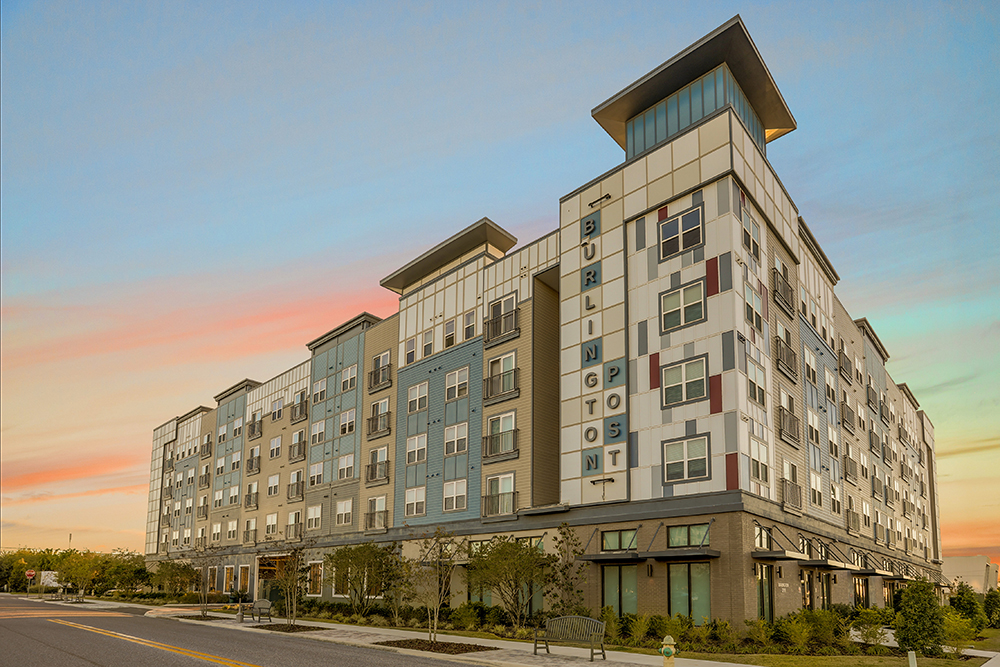Housing affordability remains a challenge locally despite the very strong economy and median-income growth.
The Tampa Bay Times recently reported that about 40 percent of St. Petersburg households spend more than 30 percent of their income on housing. Tampa Bay ranked 18th out of 20 similar U.S. communities in housing affordability in a recent Tampa Bay Partnership study.
“If the market doesn’t create sufficient affordable housing, policy mechanisms need to be used,” said former City Council member Karl Nurse, a director and supporter of nonprofit organizations.
Mayor Rick Kriseman’s goal of “safe, decent housing that’s affordable for all our residents” is being addressed:
- Nonprofits and homeowners are taking advantage of city zoning changes and incentive programs to create more low-cost housing.
- Last July, the city announced a 10-year affordable housing plan pulling together current and planned programs.
- The city also recently launched its StPete2050 visioning process about what St. Petersburg can become over the next 30 years.
The Current Situation
Charitable organizations with volunteers, donations and non-profits can develop houses in St. Petersburg relatively inexpensively. Nurse estimates a 1,200-square-foot, three-bedroom house can be marketed for $140,000 to $170,000, compared with prices of at least $250,000 by a for-profit developer. This can make the long-term difference for first-time buyers. Nonprofits including Habitat for Humanity, community lender SELF and builder Sustainable Communities are active.
Celebrate Outreach expects to complete a 635-square-foot “tiny home” for a veteran facing homelessness by June on a site obtained through the city’s new program offering foreclosed lots for affordable development. So far, 26 lots have been made available in this program.
St. Petersburg has loosened 1970s-era zoning regulations to allow for smaller, low-cost housing units. Restrictions have been reduced on accessory dwelling units (ADUs) such as garage apartments, and parking requirements for small apartments. A neighborhood traditional mixed-residential (NTM) zoning category has been created for major corridors, with additional areas to be determined. Buildings with up to four residential units will be allowed in those sections.
Alex Nicolas, neighborhood association president for Campbell Park, a largely African-American area, says his neighbors have met and will proceed to obtain NTM zoning. Interest in Campbell Park has grown because of its location near Grand Central and outside flood-prone areas.
“The process may take a year,” Nicolas said. “Residents are tired of living by an abandoned home or vacant lot and see this as the spark to create affordable housing and help the entire neighborhood flourish.”
“Assisting affordable multifamily development is a big part of what we do,” Neighborhood Affairs Administrator Rob Gerdes, said. The city was involved financially with the development of large facilities such as Burlington Post in Historic Kenwood and requests that proposals for city-owned sites such as the old police headquarters include mixed income housing.
Displacement of residents is an ongoing issue the City attempts to mitigate by increasing the options available to tenants. A luxury residential tower planned on Fifth Street N near Mirror Lake will result in the demolition of 97 low-rent apartments in seven buildings. The threat of litigation and concern about the city’s ability to attract business and jobs led the City Council to approve the project.

The Plan
The 10-year plan aims to create or preserve 7,000 households for those earning up to 120 percent of area median income. It includes $60 million – primarily from existing tax sources, but including $20 million in a proposed fee on market-rate construction – for building and preservation of 2,400 multifamily units. It estimates that 3,200 homes will be preserved by remedying code violations; 300 ADUs constructed; 500 homes purchased; 150 single-family lots provided; and more than 200 affordable units created because of incentives and on city-owned land.
It also aims to make middle-income housing more affordable by increasing market-rate units in the new NTM zones and encouraging developers to add ADUs.
The plan is separate from the public-housing programs of the St. Petersburg Housing Authority. Gerdes notes the city would very much like for the the SPHA to add units and is willing to offer assistance.
The Vision
The StPete2050 visioning process will cover the full range of topics on what the city will become over the next 30 years. It is under way with community feedback workshops and is expected to be completed by fall. Implementation will follow through updating the comprehensive plan and land-development regulations.
City Council member Darden Rice, vice chair of the countywide land-use and transportation-planning agency Forward Pinellas, advocates policies that address transportation and small-business costs together with housing affordability. StPete2050 may provide a forum to consider such a broad range of ideas.
Rice envisions clusters along future bus rapid transit (BRT) routes with NTM zoning and frequent service. The goal would be distributed, walkable, complete neighborhoods where land costs are relatively inexpensive, parking requirements are low, and residents can walk or ride to work and retail areas without needing a car.
Developing an affordability strategy is important, Rice said. “Otherwise, St. Pete risks losing authenticity and becoming a tougher place to live for many. It would negatively affect the whole city.”



